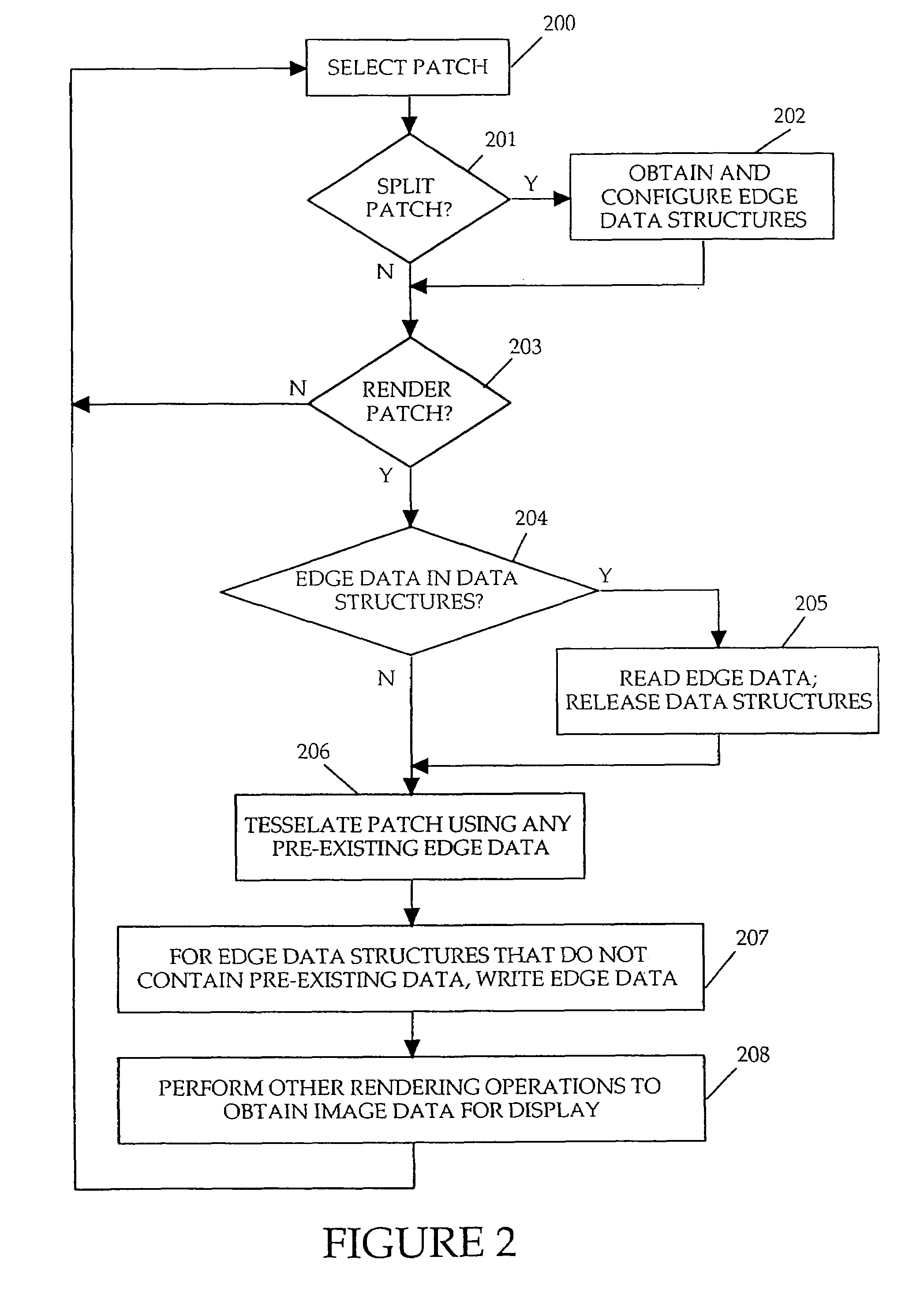Method and apparatus for surface approximation without cracks
a surface approximation and crack technology, applied in the field of computer graphics, can solve the problems of not eliminating all cracking sources, creating narrow gaps or cracks, and unsatisfactory phenomena such as cracks, and achieve the effect of preventing visible cracks due to t-vertices and reducing time and memory requirements for rendering
- Summary
- Abstract
- Description
- Claims
- Application Information
AI Technical Summary
Benefits of technology
Problems solved by technology
Method used
Image
Examples
Embodiment Construction
[0032]The invention is a method and apparatus for surface approximation without cracks. In the following description, numerous specific details are set forth to provide a more thorough description of embodiments of the invention. It will be apparent, however, to one skilled in the art, that the invention may be practiced without these specific details. In other instances, well known features have not been described in detail so as not to obscure the invention.
[0033]In one or more embodiments of the invention, a data structure mechanism is provided for maintaining adjacency information for boundaries between regions of a surface. Those regions may be, for example, subdivision surfaces, patches or even two independently modeled surfaces that a designer now wishes to combine. The adjacency information is written by the first adjacent region to be rendered into a data structure associated with a given edge of the region. When the opposing region is subsequently rendered, a tessellation ...
PUM
 Login to View More
Login to View More Abstract
Description
Claims
Application Information
 Login to View More
Login to View More - R&D
- Intellectual Property
- Life Sciences
- Materials
- Tech Scout
- Unparalleled Data Quality
- Higher Quality Content
- 60% Fewer Hallucinations
Browse by: Latest US Patents, China's latest patents, Technical Efficacy Thesaurus, Application Domain, Technology Topic, Popular Technical Reports.
© 2025 PatSnap. All rights reserved.Legal|Privacy policy|Modern Slavery Act Transparency Statement|Sitemap|About US| Contact US: help@patsnap.com



